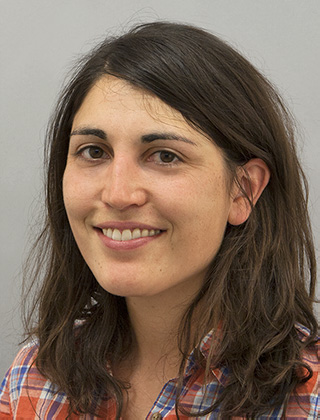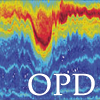
|
Kyla Drushka Principal Oceanographer Affiliate Assistant Professor, Oceanography kdrushka@apl.washington.edu Phone 206-543-6858 |
Education
B.S. Physics, McGill University, 2004
Ph.D. Physical Oceanography, Scripps Institution of Oceanography, 2011
Videos
|
NASA Expedition Measures the Salty Seas Chief Scientist Andy Jessup and a multi-institutional team of researchers embarked on an expedition to the tropical Pacific Ocean in early August 2016. |
More Info |
19 Aug 2016
|
|||||||
|
The team is measuring near-surface ocean salinity and the atmospheric and oceanic dynamics that control it. For their part, researchers from APL-UW’s Air-Sea Interactions and Remote Sensing Department are using several platforms on the R/V Revelle to measure the ocean’s response to freshwater input during and immediately after intense bursts of rainfall that are typical of the eastern tropical Pacific Ocean |
|||||||||
|
Publications |
2000-present and while at APL-UW |
Impact of rain-adjusted satellite sea surface salinity on ENSO predictions from the GMAO S2S forecast system Hackert, E., and 7 others including K. Drushka, "Impact of rain-adjusted satellite sea surface salinity on ENSO predictions from the GMAO S2S forecast system," J. Geophys. Res., 130, doi:10.1029/2024JC021773, 2025. |
More Info |
9 May 2025 |
|||||||
|
Previous research has shown that assimilating satellite sea surface salinity (SSS) has improved initialization of coupled El Niño/Southern Oscillation (ENSO) forecasts. However, most of these assimilation techniques have either removed the freshwater bias by correcting to monthly mean fields of subsurface observations or ignored it altogether. In this paper, we explore the impact of accounting for the satellite SSS fresh bias by first estimating, then removing the near-surface salinity gradient from the satellite SSS using the Rain Impact Model (RIM [Santos-Garcia et al., 2014). This diffusivity model is calculated using collocated satellite rainfall and SSS estimates. Two ocean reanalyses are produced, one assimilating RIM data, which removes the fresh bias at the surface (SSS_RIM), and the other experiment retains this bias (CONTROL). Both reanalyses additionally assimilate all conventional ocean observations. Comparison of SSS_RIM versus CONTROL shows that the thermocline is deeper for the SSS_RIM, allowing this reanalysis to store more heat. Removing the fresh bias destabilizes the water column for the SSS_RIM experiment, allowing enhanced mixing, and more heat storage. ENSO forecasts initiated from April reanalyses from 2015 to 2021 are consistently warmer for SSS_RIM than for the CONTROL. For all but one instance (2017), these SSS_RIM forecasts are closer to observations than the CONTROL. These results argue that operational coupled forecast centers should reevaluate bias-correcting the satellite SSS using monthly gridded fields of in situ salinity, but rather they should utilize observed rainfall to estimate coincident near surface salinity gradients. |
|||||||||
Salinity and Stratification at the Sea Ice Edge (SASSIE): An oceanographic field campaign in the Beaufort Sea Drushka, K., E. Westbrook, F.M. Bingham, P. Gaube, S. Dickinson, S. Fournier, V. Menezes, S. Misra, J.P. Valentin, E.J. Rainville, J.J. Schanze, C. Schmidgall, A. Shcherbina, M. Steele, J. Thomson, and S. Zippel, "Salinity and Stratification at the Sea Ice Edge (SASSIE): An oceanographic field campaign in the Beaufort Sea," Earth Syst. Sci. Data, 16, 4209-4242, doi:10.5194/essd-16-4209-2024, 2024. |
More Info |
16 Sep 2024 |
|||||||
|
As our planet warms, Arctic sea ice coverage continues to decline, resulting in complex feedbacks with the climate system. The core objective of NASA's Salinity and Stratification at the Sea Ice Edge (SASSIE) mission is to understand how ocean salinity and near-surface stratification affect upper-ocean heat content and thus sea ice freeze and melt. SASSIE specifically focuses on the formation of Arctic Sea ice in autumn. The SASSIE field campaign in 2022 collected detailed observations of upper-ocean properties and meteorology near the sea ice edge in the Beaufort Sea using ship-based and piloted and drifting assets. The observations collected during SASSIE include vertical profiles of stratification up to the sea surface, air–sea fluxes, and ancillary measurements that are being used to better understand the role of salinity in coupled Arctic air–sea–ice processes. This publication provides a detailed overview of the activities during the 2022 SASSIE campaign and presents the publicly available datasets generated by this mission (available at https://podaac.jpl.nasa.gov/SASSIE, last access: 29 May 2024; DOIs for individual datasets in the "Data availability" section), introducing an accompanying repository that highlights the numerical routines used to generate the figures shown in this work. |
|||||||||
Linking northeastern North Pacific oxygen changes to upstream surface outcrop variations Mecking, S., and K. Drushka, "Linking northeastern North Pacific oxygen changes to upstream surface outcrop variations," Biogeosciences, 21, 1117-1133, doi:10.5194/bg-21-1117-2024, 2024. |
More Info |
7 Mar 2024 |
|||||||
|
Understanding the response of the ocean to global warming, including the renewal of ocean waters from the surface (ventilation), is important for future climate predictions. Oxygen distributions in the ocean thermocline have proven an effective way to infer changes in ventilation because physical processes (ventilation and circulation) that supply oxygen are thought to be primarily responsible for changes in interior oxygen concentrations. Here, the focus is on the North Pacific thermocline, where some of the world's oceans' largest oxygen variations have been observed. These variations, described as bi-decadal cycles on top of a small declining trend, are strongest on subsurface isopycnals that outcrop into the mixed layer of the northwestern North Pacific in late winter. In this study, surface density time series are reconstructed in this area using observational data only and focusing on the time period from 1982, the first full year of the satellite sea surface temperature record, to 2020. It is found that changes in the annual maximum outcrop area of the densest isopycnals outcropping in the northwestern North Pacific are correlated with interannual oxygen variability observed at Ocean Station P (OSP) downstream at about a 10-year lag. The hypothesis is that ocean ventilation and uptake of oxygen is greatly reduced when the outcrop areas are small and that this signal travels within the North Pacific Current to OSP, with 10 years being at the higher end of transit times reported in other studies. It is also found that sea surface salinity (SSS) dominates over sea surface temperature (SST) in driving interannual fluctuations in annual maximum surface density in the northwestern North Pacific, highlighting the role that salinity may play in altering ocean ventilation. In contrast, SSS and SST contribute about equally to the long-term declining surface density trends that are superimposed on the interannual cycles. |
|||||||||
In The News
|
Overcoming the challenges of ocean data uncertainty EOS – Science News by AGU Kyla Drushka, with co-authors Shane Elipot, Aneeesh Subramanian, and Mike Patterson, write that in oceanography, as in any scientific field, the goal is not to eliminate uncertainty in data, but instead to better quantify and clearly communicate its size and nature. |
12 Jan 2022
|
|
Atlantic Ocean’s slowdown tied to changes in the Southern Hemisphere UW News and Information, Hannah Hickey The ocean circulation that is responsible for England’s mild climate appears to be slowing down. The shift is not sudden or dramatic, as in the 2004 sci-fi movie “The Day After Tomorrow,†but it is a real effect that has consequences for the climates of eastern North America and Western Europe. |
5 Oct 2016
|






